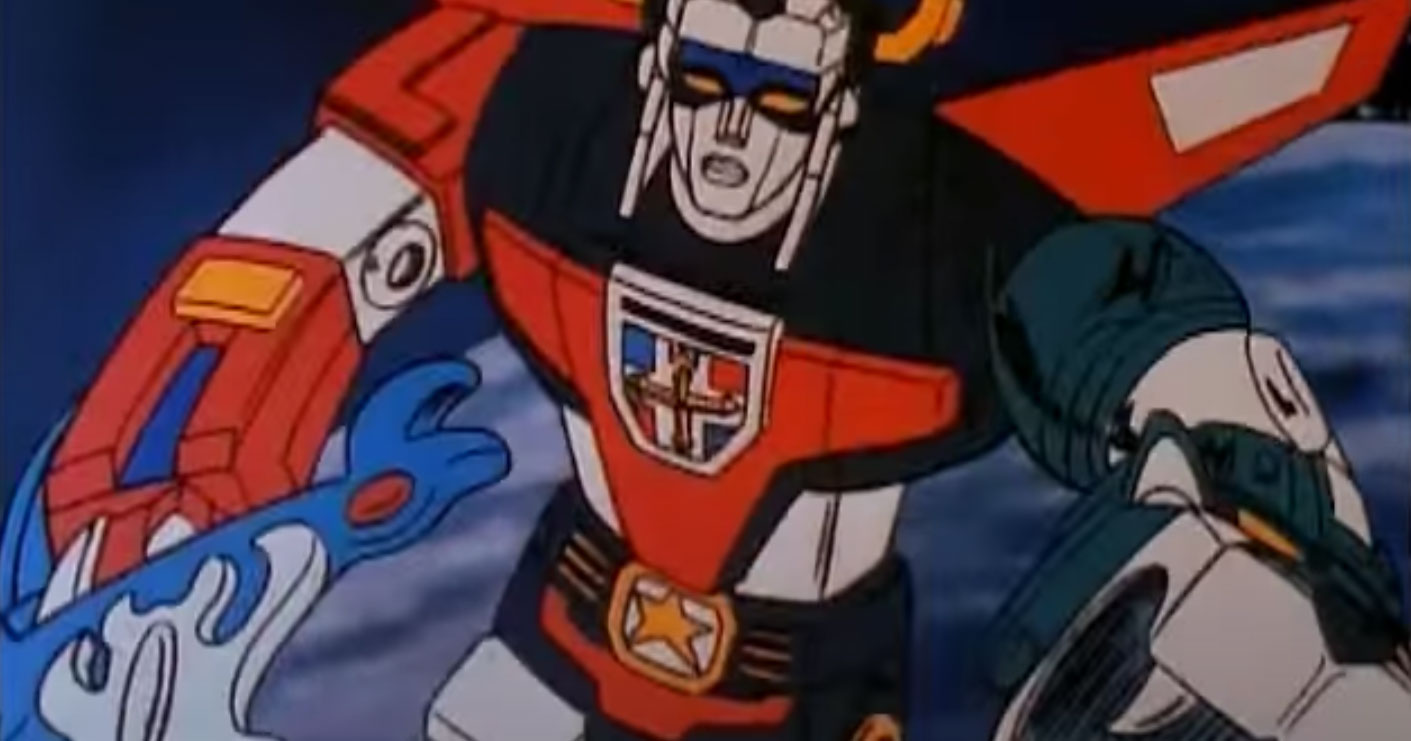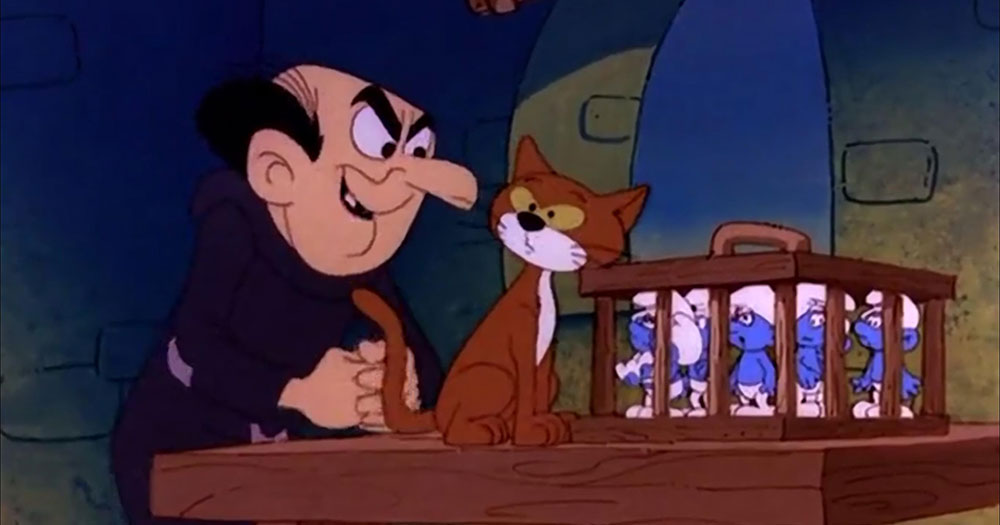Random storytelling lessons I learned from watching “GoLion” (the original version of Voltron)
Storytelling do’s and don’ts from Voltron

I watched Voltron as a little girl in the 80’s, and my brother and I received a Voltron “action figure” for Christmas. It turns out Voltron was the re-edited American version of Beast King GoLion, which I now see was longer, darker, grittier, and a tad bit blasphemous from a Christian standpoint.
So on GoLion I’m on episode 14 where the evil prince I knew from Voltron finally shows up. You know, the prince who was obsessed with Princess Allura? Except in GoLion her name is Fala.
Be warned, I’m mostly tongue in cheek on this. I will say my brother and I were the type of kids who would get impatient with the Smurfs whenenever they screamed and cried about Gargamel capturing them in cages … because they could just walk out between the bars.

“Stop crying and walk out already!” we’d scold the idiots.
Because as our mom and Grandma would say, “Crying never solves anything.” And Dad seemed to agree with that.
Anyway, here are some storytelling lessons from GoLion:
- Take some time to differentiate characters, and actually characterize them before you kill them off. This way there’s more impact.
- Be consistent about what your characters are capable of.
- Don’t make the villains carry the Idiot Ball.
- Characters should learn from experience.
- In storytelling, it is a good idea to vary and escalate the nature of the challenges the heroes face.
And no, nicknames don’t count as characterizing.
In GoLion I only latched on to the portly gentleman I knew as “Pidge” in Voltron, and the short kid is … Shorty. The three thin men of normal height just seemed interchangeable, and by episode 14 I still didn’t know what Pidge’s name is in Go Lion. I’m not normally this bad at retaining names.
When “Moody” was killed, I mostly just wondered which one of the three thin men he was. It turned out he piloted the Blue Lion. His death would have had more impact if he had been made interesting and distinguishable from his teammates. What his teammates said about him at his eulogy just made me think, “Huh, I guess I’ll have to take their word for it about what he was like.”
If your characters can leap to and from improbable distances in episodes 1 - 13.5, I am not going to believe that one of them is trapped when the bad guy has him against the edge of a cliff at the half time mark of episode 14. Especially if he started the fight by leaping over the head of “The Crown Prince of Hell,” that episode’s titular villain.
Don’t introduce abilities that may be inconvenient for your plotting later.
Captain Sadak decides to attack Princess Fala’s planet, Altea, during foggy weather. He thinks there’s no way they can detect his ship in fog.
Uh huh.
Voltron, I mean GoLion, is called the “Defender of the Universe.” Sadak’s plan apparently hinges on the DotU not having radar, even though “universe” implies intergalactic travel capabilities. Fortunately in this episode the good guys are two steps ahead and have set a trap. This is highly unusual of them …
I don’t know how many times the main characters are caught up in Samaritan snares set by the evil witch Hagar/Honerva and the Evil Emperor Daibazaal. Incidentally, I do wonder if Daibazaal’s name is supposed to reference Beelzebub. (The Christian imagery with GoLion makes this a plausible supposition).
At the same time, the bad guys only seem to have two tactics: use their ships to fire missiles first. Then turn various people / monsters into kaiju (Godzilla-sized monsters). The kaiju promptly get stomped by Voltron / GoLion. Sometimes the bad guys switch it up and use intrigues against the pilots, but they curiously neglect to shoot the good guys once they have them tied up. Which brings me to …
If you’re exercising, you increase the weight you lift once the current weight gets easy. Voltron / GoLion can easily swat kaiju, so give him an enemy he has to work to defeat.
Occasionally the writers do something different, like having Princess Fala order Altea’s surrender when Sadak takes civilian hostages. In that case, Shorty, the Green Lion pilot, comes up with a tactic to trick the bad guys and get the jump on them. The lesson here is Variation + Escalation = keeps audience interest.
I’ve since finished the series after having written this a while ago. Let me reiterate point three. People, if you have a curbstomping character and you figure, “this character is the main event,” there’s a slight problem in that you introduce the Worf Effect to the other characters.
Voltron / GoLion always just has to whip out his King Jyuoken sword to kill kaiju and mecha-kaiju. Alone, the Lions aren’t that big a deal. So, I’d consider *not* bringing Voltron into what’s supposed to be a minor-league fight. Let each Lion play to their strengths. Let the pilots “science” their way out of the fights (they do sometimes). Reserve Voltron for when feats of supreme badassery are called for, against an enemy worthy of those feats.
Of course, I do understand this was a kid’s cartoon, so my objections don’t apply in that context. But on a more mature storytelling level I go with “aquila non capit muscas”: An eagle doesn’t catch flies. In other words, you send Gandalf to fight the Balrog, not bog midges.
That’s all for now. Other things should be obvious, like maybe don’t call the Evil Emperor the “Evil Emperor.” Unless you mean to be cartoonish, of course. It’s a little jarring that characters who look as if they commute to work from the Ninth Circle of Hell keep planning to send people there. So many questions about their metaphysical beliefs!
Update: First Impressions of the Netflix reboot of Voltron☍
Editor’s Note: A year after I wrote this, I discovered Netflix created their own version of “Voltron.” In those days, I had not yet learned to rue Netflix reboots of my childhood favorites (“She-Ra,” “He-Man”), so I eagerly watched the first two seasons of their Voltron.
The first thing I noticed was more attractive animation. Other things that caught my attention:
- Less scene recycling.
- Worldbuilding
- I mentioned not being able to tell the characters apart in GoLion. That’s not an issue in Netflix’s Voltron.
- Cast change
- No religion.
- The bad guys are a little less cartoonish.
In GoLion it was obvious the animators just copy/pasted scenes from one episode to the next. For example, the shot of the Black Lion pilot (he wears red) sitting in his chair and flicking his wrist to grab the controls as he gives the command for the Lions to form GoLion.
Here is a version in English, from the 80’s Voltron. Just the first three seconds in particular. Get used to the sequence, you see it over and over again. I didn’t see so much recycling in Netflix’s Voltron.
When I binge-watched GoLion I thought it was odd that Fala and the Alteans weren’t supposed to be human, even though they clearly looked human. It would have made sense for them to be human colonists in the far, far future of intergalactic travel, but I don’t remember them making that claim.
In Netflix’s Voltron, they neatly sidestep this silliness by making Allura (they use the Voltron version of her name) and her race space elves instead of human. Space elves with useful powers and British accents at that. And her reaction when she sees a human for the first time is, “Ew! What’s wrong with your ears?”
The evil empire soldiers also have this neat touch, where they salute each other with the phrase “vrepit sa!” It makes them seem more plausible, as if there’s an actual culture underpinning their existence.
I had no trouble differentiating them fairly quickly. It’s more that Netflix showed the difference in their personalities versus just relying on their nicknames to do the job for them.
I always wondered about Green Lion pilot Shorty’s hairstyle in GoLion / Voltron. It’s so girlish. It always nagged me, why does he wear a headband? Was it supposed to be a bandana? I think the Netflix crew must have wondered the same thing. And since it’s the 20-teens, there was only one way to go here: make him a her.
In GoLion you saw some Christian symbolism and religious references — the bad guys were frequently intent on sending people to hell, even though they look like they either live in hell, or are emigrants from there.
It was clear GoLion’s writers had heard of Christianity, but only via a game of telephone with an assist from Google Translate – very impressive since this was the 80s! I gather Christians are about 1 % of Japan’s population right now; must have been even less back in the day.
I don’t remember any of the religious overtones appearing in the 80’s era American Voltron, and I suspect they would have been edited out to avoid angry letters and confused children.
Netflix does not include religion, either: Voltron is never referred to as a god for people to worship, as he was in GoLion. Also he doesn’t have a Christian cross on his chest that shoots monster-slaying laser beams. Plus, unlike in GoLion he isn’t being punished by the Goddess of the Universe for his hubris in challenging her (this part of the opening was cut from the 80’s Voltron).
There’s an amusing scene in Netflix’s Voltron where Allura is undercover and asks an imperial soldier to rate his scale of bloodthirstiness on a scale of 1 to 5. At one end he’s “all full up,” and at the other end he’s “unquenchable.” The soldier pauses and considers the matter, then rates himself a 3.
Whereas in GoLion, to borrow a Simpson’s reference, “someone set this thing to evil” (fast forward to the 53 seconds mark if you like). The Galra soldiers were just all evil, and in the same predictable way.
However, when I began the first season I suspected Netflix would go the route of GoLion and kill off the Blue Lion pilot so Allura can take over. There were a few scenes where I was expecting it to happen, but it hasn’t yet. I suspect the Blue Lion pilot is safe, only because he appears to be the comic relief character. Then again, this is the age of grrrrl power — too many Rs? Not enough? — so maybe it’ll be the Black Lion pilot they kill off, because he’s the leader.
In GoLion, Fala (Allura) took some grief from other planetary leaders — the leaders of the good planets (at the 32nd mark) — because as the Blue Lion pilot she’s Voltron’s left leg. The Black Lion is the biggest Lion, and it’s Voltron’s head and torso. The Good Planet Leaders disparaged her for piloting the left leg, when as princess she ‘should’ be the head.
By the end of season two I think my instinct may be right about Allura taking over the Black Lion. I imagine that question will be resolved in season three, when the “Crown Prince of Hell” shows up.